Gen Z is stressed. For young artists in Hong Kong, who have lived through a challenging period in their late teens, life hasn’t been easy. Yet difficult times often brew groundbreaking ideas and sharpen people’s awareness of their surroundings, evidenced by the graduation exhibitions in Hong Kong this year. Despite spending half of their university life on Zoom, the art graduates of 2024—from the Chinese University of Hong Kong (CUHK), Hong Kong Baptist University (HKBU), and Hong Kong Art School (HKAS)—exhibited a shared concern on individual relationships with others, their attentiveness to the pressing issues in the society, and their capability to embrace life’s unpredictable nature.
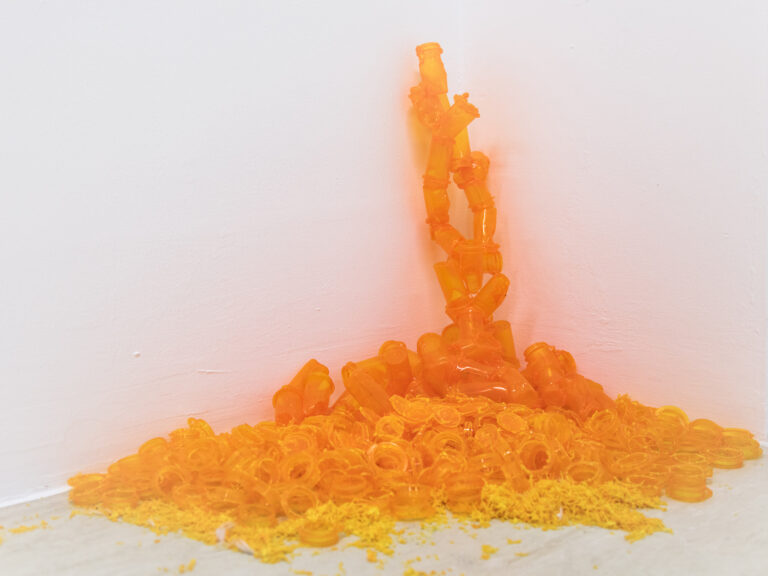




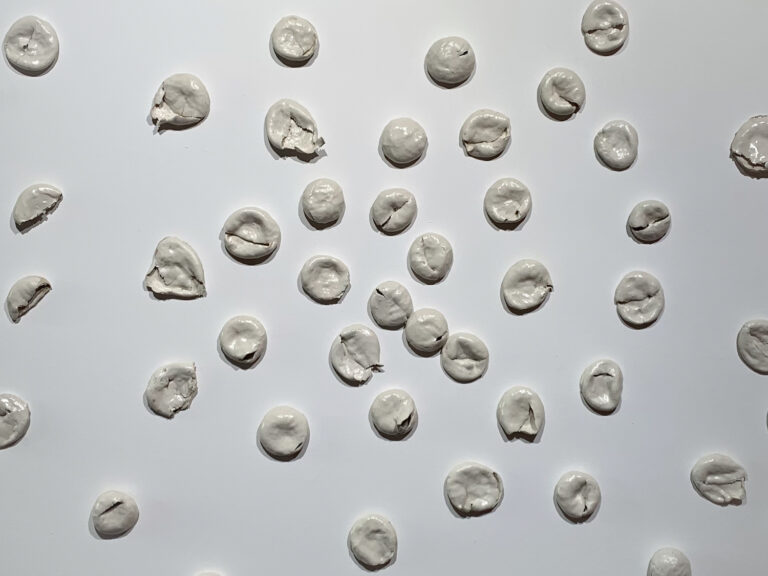
The graduation season was kicked off by “Opus,” held at HKBU Academy of Visual Arts’s Kai Tak Campus, the former Royal Air Force Officers’ Mess. Daring in the use of mediums, these artists revealed how emotional landscape and common misbeliefs are often reflected by objects in the domestic environment. Some works made me feel nervous. Wong Cho Tik’s installation Tides of Tenacity / Waves of Neuroplasticity (all works 2024, unless otherwise stated), for example, comprises more than 200 used orange prescription bottles, occupying the corner of a room like a beehive. In resemblance to genetic structure, the work represented the endurance in pain and the collaborative effort in recovery. The bars of soap in Erica Cheung’s Soap me reminded me of acne, freckles, and eczema, evoking one’s anxiety about their looks. While soap is generally seen as hygienic, here they look unpleasant and disgusting, questioning one’s pursuit of perfection for appearance. In a more disturbing gesture, Janice Wong’s five-minute-long video /seɪv/ details the process of dissecting a flower and discusses the condition of emotional manipulation while stirring a sense of discomfort within the audience. While one might habitually suppress their negative emotions, for Zeng Xiaoru’s Shaped, the artist invited participants to throw clay onto the wall as stress relief. The results speak of the quiet violence brought by suppressed emotions.
![Lo Wing Shan, Did You Ask Today? [nei5 gam1 jat6 man6 zo2 mei6], 2024, seal stones, cinnabar paste on paper, laser engrave on wood, dimensions variable. Courtesy of the artist and The Art of CUHK.](https://artcentralhongkong.com/wp-content/uploads/2024/07/Lo-Wg-Shan-768x576.jpg)
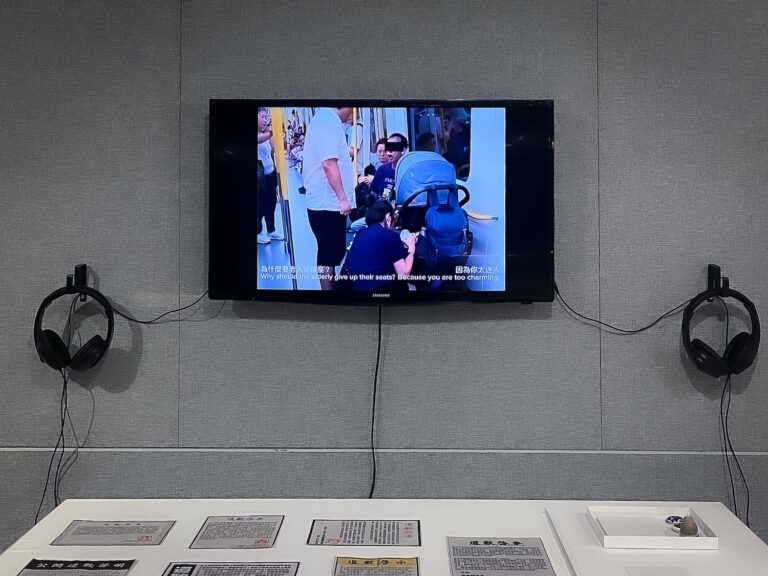
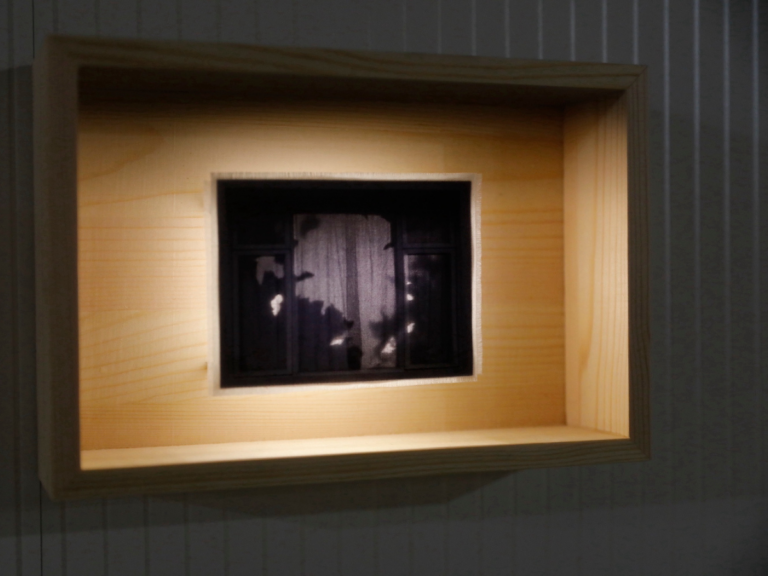
The next day, “The Art of CUHK” launched the projects by both BA and MFA students across CUHK’s campus on a hillside in New Territories. The scale of the two-month-long event was comparable to a mini art festival. I almost got a heatstroke waiting for the bus and trekking uphill while figuring out the routes, but it was all worth the effort. As a university that honors Chinese literati traditions, CUHK’s Department of Fine Arts is known for its emphasis on the spirit of craftsmanship, which, I’ve felt, was embodied by the works at the BA exhibition, “Once in a Blue Moon.” The delicately carved seal stones in Lo Wing Shan’s Did You Ask Today? [nei5 gam1 jat6 man6 zo2 mei6], for example, recall the ritual of drawing fortune sticks at the temple. I was tempted to draw the seal stones from the box and match the images with the Chinese interpretations on the wall, but I chuckled at the texts “YOLO” and “I know nothing.” By including these arbitrary responses, the work provoked thoughts on people’s over-reliance on divination tools in search for harmony during turbulent times. Also incorporating chop stamps was Jennifer Lee’s installation Trilogy of Love, which includes a pile of “apology letters” and a series of viral videos capturing quarrels on Hong Kong’s public transport but playfully dubbed with compliments and expressions of love. While highlighting the precariousness of human relationships, the work also teased the possibility of mutual understanding and love, which are often lost in miscommunication. The sense of warmth continued in a nearby work mounted on the wall, Chan Nok’s Longed For, which features photos of neighborhood windows lit by a small light bulb inside each of the wooden boxes. Taken by Chan during his night walk, these windows represent the boundary between individuals as well as the ambiguity that allows for possible interactions. No longer self-absorbed in their world, these artists bridged traditions with shared sentiment felt in the contemporary society and asked the audience to reconsider the possibility of human relationships.
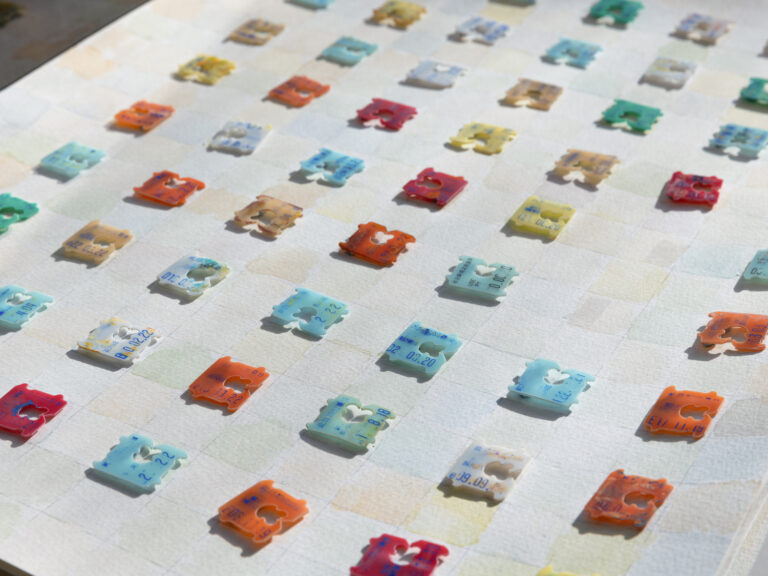


One month later, HKAS’s exhibition, “Ephemeral,” opened at Hong Kong Arts Centre (HKAC) with a focus on the concept of memory, temporality, and transience of life. A 26-year-old collaboration between HKAC and Melbourne’s RMIT University, HKAS encourages students to establish their artistic identities through innovation and rigorous critique. In Connie Lau’s installation and watercolor paintings, Remembering and Forgetting (2023–24), even expiry date labels are expiring with their ink fading away, which echo the inability of all to withstand the test of time. Limited time was also felt in Carmen Lam’s installation Still – Life (2023), featuring a black-and-white photo projected onto the wall, an empty photo frame, and her father’s chair. While the audience’s time passed, Lam’s impression of a living space in the past was recreated and erased repeatedly in the work, as if they slid in and out of her memory. Carol Leung adopted time’s ability to heal in her work Bloodline (2023), which shows her father’s image gradually disappearing on thermal papers, next to her mother’s photo warmly reprinted in a frame, as an effort to reconcile the pain brought by her original family. These philosophical takes reflected the artists’ ability to heal interpersonal relationships and adapt amid drastic change in life.

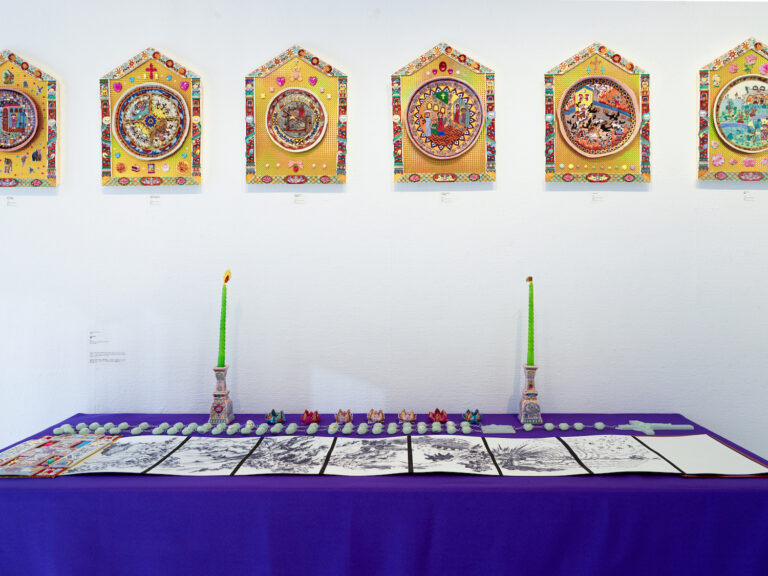
When our relationships with others in real life are at stake, we go online to look for consolation. Janet Cheung’s fourteen-part Cantonese porcelain, Stations of LIHKG (2022–23), took inspiration from Via Dolorosa (Jesus’s route to his crucifixion) and illustrated local stories of suffering shared by people on the notorious online forum LIHKG—the Hong Kong equivalent of Reddit. Infused with humor, the work showed how online space is often utilized as a channel for emotional release and even self-redemption. Just as Cheung was inspired during the time of isolation at home, the past few years, though difficult, granted the artists a chance to delve into the events around them. By negotiating the limitations in life, the young artists in Hong Kong have carved a path to navigate through the chaos.



